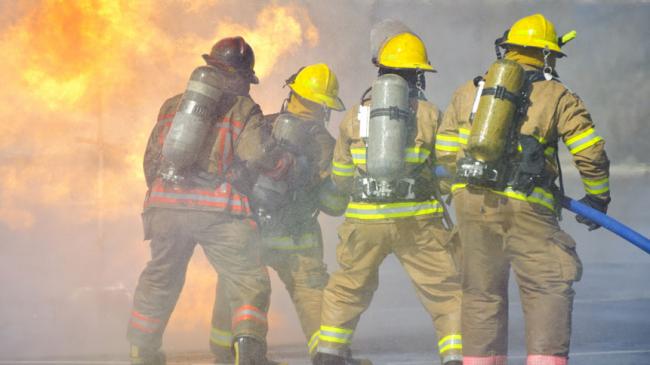The National Firefighting and Rescue System (NFRS) is part of the fire protection system in Poland. Tasks of the NFRS units include saving people’s life and health as well as property affected by fire, natural disasters or other local threats.
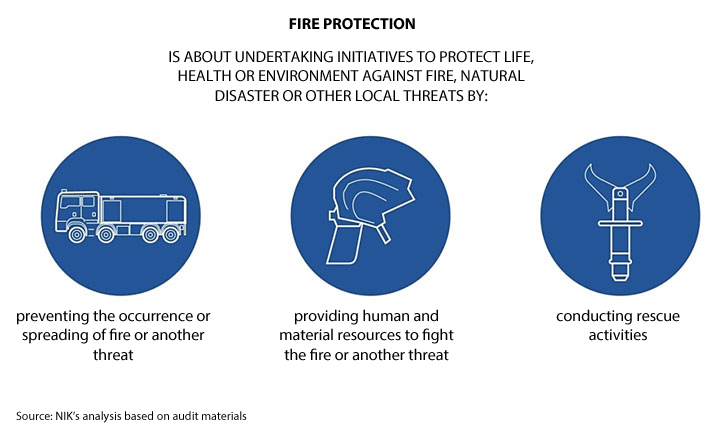
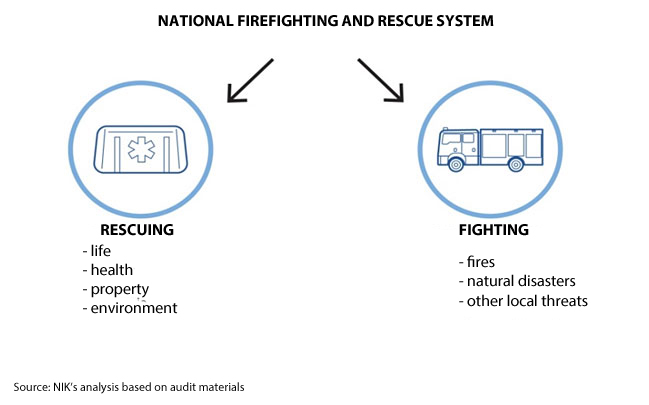
The Minister of Internal Affairs and Administration issued legal acts to regulate the organisation and functioning of the National Firefighting and Rescue System and defined the conditions and procedures of incorporating subsequent fire protection units into the NFRS.
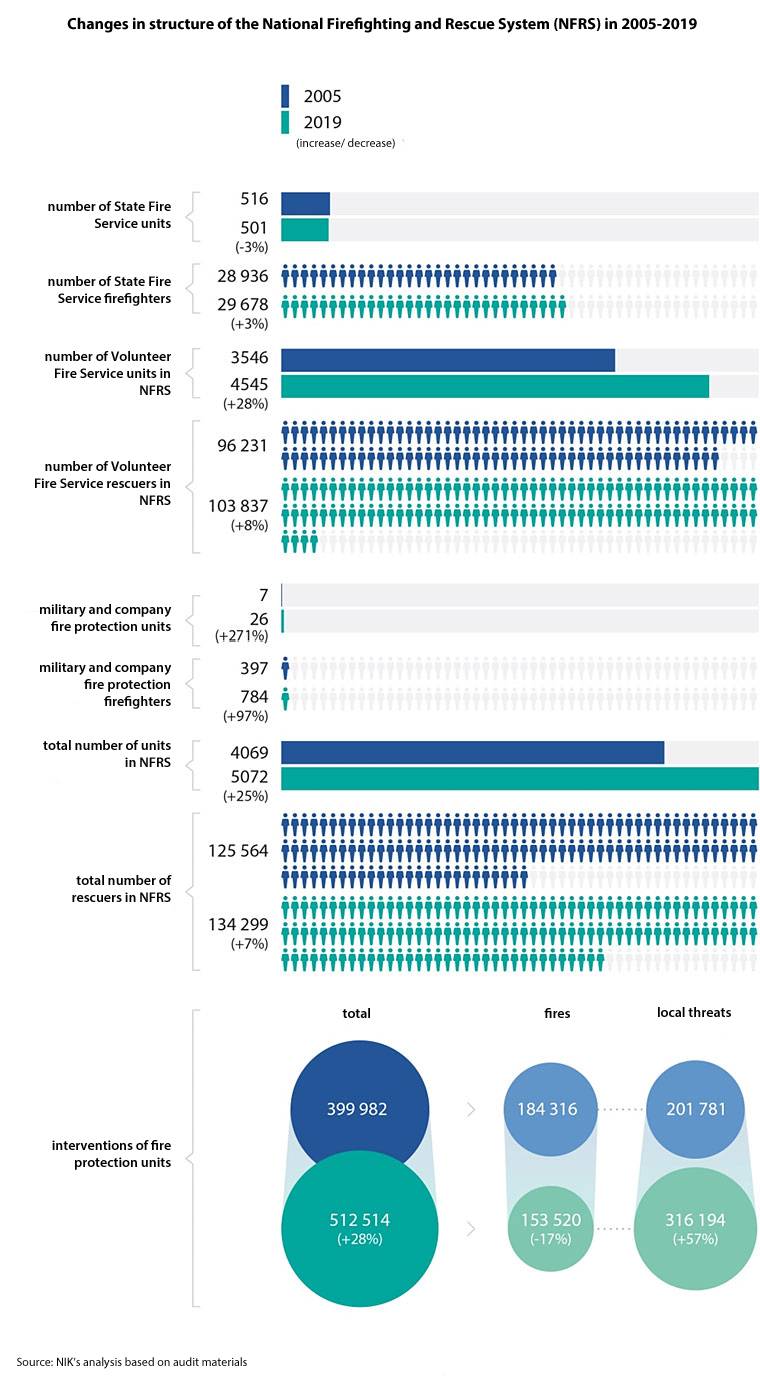
Under applicable laws and ordinances, the Commander-in-Chief of the State Fire Service (SFS) defined the principles of organising rescue activities, including specialist activities, boosting operational readiness, principles of notification and cooperation of entities nationwide during rescue activities, functioning of telecommunications and IT systems, recording of incidents, psychological assistance, cooperation with the media.
In 2017, the Commander-in-Chief of the SFS developed a subsequent, four-year plan of Volunteer Fire Service (VFS) units to be incorporated into the NFRS in 2017–2020. Until 20 August 2020, the SFS Commander-in-Chief incorporated 421 VFS units into the system out of 477 planned ones. The target network plan was not specified as the NFRS is an “open” system, considering an increase of threats caused by civilisation development, in particular the expansion of road networks and the infrastructure of industrial plants.
Ex officio, the system is composed of the State Fire Service units and other units incorporated into the system by the Commander-in-Chief of the SFS: Volunteer Fire Service units, military, company and airport fire protection units.
In the first half of 2020, the NFRS was made up of 5100 units, including 501 rescue and firefighting units of the SFS and 28 isolated SFS posts, 4545 VFS units and 26 other fire protection units, i.e. military, company and airport fire protection units.
All in all, the NFRS was reinforced with nearly 134 300 rescuers, including: nearly 29 700 professional firefighters, about 103 900 VFS members and representatives of other fire protection entities – 784 rescuers.
The system has constantly developed in the past years, also because the number of incidents requiring intervention of units being part of the system has increased systematically.
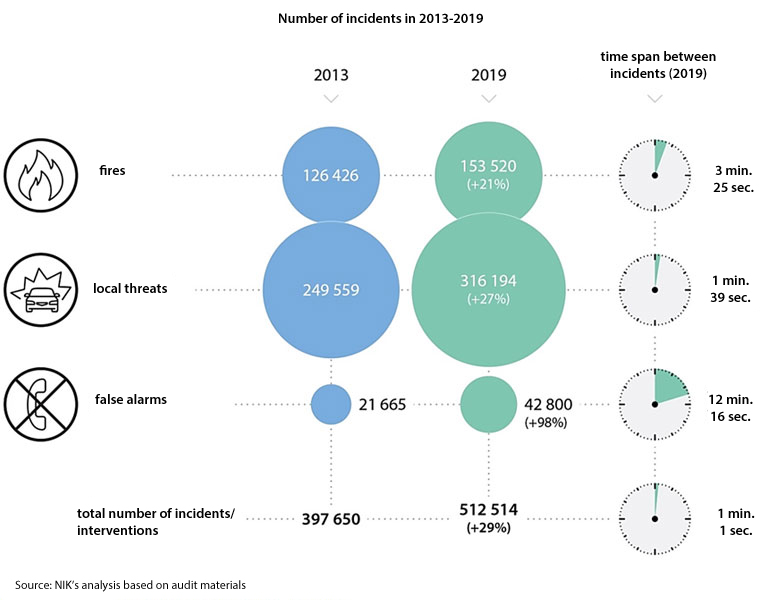
The NFRS backbone are firefighting and rescue units of the State Fire Service. Although the SFS firefighters constitute only less than ¼ of all the NFRS rescuers, they take active part in nearly ⅔ of all incidents.
The State Fire Service has an effective training system in place. It is designed for the SFS and the VFS firefighters but is also used by firefighters from other formations. The system rescuers are properly trained for rescue activities.
The NFRS units were characterised by high availability, whereas the availability of professional units, that is the State Fire Service, Military Fire Service and Company Fire Service was 100%, and in case of the Voluntary Fire Service it was about 96%. The percentage of rescue interventions where the first firefighting and rescue unit reached the site in less than 15 minutes, oscillated around 90%.
The system units are well equipped with firefighting and rescue vehicles as well as special vehicles. In the middle of 2020, they had almost 15 thousand vehicles of this type at their disposal. However, part of the SFS units did not have full rescue equipment. Nearly 3 percent of the Volunteer Fire Service failed to meet the relevant requirements.
The Commander-in-Chief of the SFS organised an effective emergency alert and notification system for the NFRS units. He took efforts to provide better equipment to firefighting units, e.g. by subsidising specialist equipment purchases. All of the NFRS units had an analogue communications system at their disposal.Usually the SFS units complied with the norms defining the equipment quantities. The national base of specialist equipment and extinguishing agents was in place in each province. But the Commander-in-Chief of the SFS failed to define the principles of their organisation.
The audit results helped evaluate the National Firefighting and Rescue System and identify basic problems in performing rescue activities but also indicate the directions of corrective measures.
NIK has noted first of all that the Commander-in-Chief has no organisation rights (control) over the VFS units and other fire protection units being part of the NFRS(although he is the NFRS organiser, in line with the applicable law). Those units properly discharge their firefighting and rescue tasks, executing orders of the District/ City Police Headquarters of the State Fire Service. Though, the Commander-in-Chief’s rights result only from the units’ declarations about their readiness to access the system.
According to NIK, regulating the NFRS organisation and functioning in the law would help develop and expand the system, above all by standardising the units’ equipment and rescuers’ training coverage.
The audit has shown that the ordinance on incorporating firefighting units into the National Firefighting and Rescue System does not define (except for some cases) ways of excluding units from the NFRS. According to NIK, adding relevant provisions to the ordinance would make the system more transparent and ensure standardisation of procedures in that area.
A big issue for many Volunteer Fire Service units is the equipment age, especially as regards firefighting and rescue vehicles as well as special vehicles. The maintenance of obsolete equipment in a good technical condition is quite costly for parent communes of those VFS units.
NIK has also pointed out that despite efforts taken by subsequent ministers of internal affairs, no digital radio communications system has been created to enable direct information exchange by rescue services. According to NIK, the existing analogue system does not allow simultaneous information exchange by numerous users, which may have an adverse impact on the efficiency of conducted rescue activities.
This audit has also confirmed the NIK audit results of 2018 pointing to unfavourable changes in the Volunteer Fire Service units.The ongoing social and demographic changes may have a negative impact on generational replaceability of the VFS rescuers in future.The labour market is changing, more and more people migrate to find a better job and. This trend cannot be reconciled with living in the same town for decades and being bound with a local Volunteer Fire Service unit for many generations.
The SARS-COV-2 pandemic has made the situation of small businesses really hard. Employers often need to fight to keep the business. It is difficult to be reconciled with hiring the VFS firefighters, ready to stop doing their everyday work to help other people.
Also, financial issues of the VFS firefighters’ parent communes are not without influence on the amount of support for rescue activities taken as part of the NFRS.
Recommendations
NIK has made the following recommendations for the Minister of Internal Affairs and Administration:
- to initiate legislative works to add provisions on the exclusion of units from the National Firefighting and Rescue System to the ordinance of the Minister of Internal Affairs of 2014 on incorporating firefighting units into the NFRS;
- to consider taking measures to regulate the National Firefighting and Rescue System operation with an act;
- to ensure:
- increasing financial aid for the VFS units in terms of maintaining their rescue capacity and supporting the process of renewing the park of firefighting and rescue vehicles;
- launching the nationwide digital communications system as soon as possible;
- conducting in-depth conceptual and analytical works to develop coherent and comprehensive legal solutions to streamline the NFRS functioning, including incentives for the VFS firefighters’ employers.


